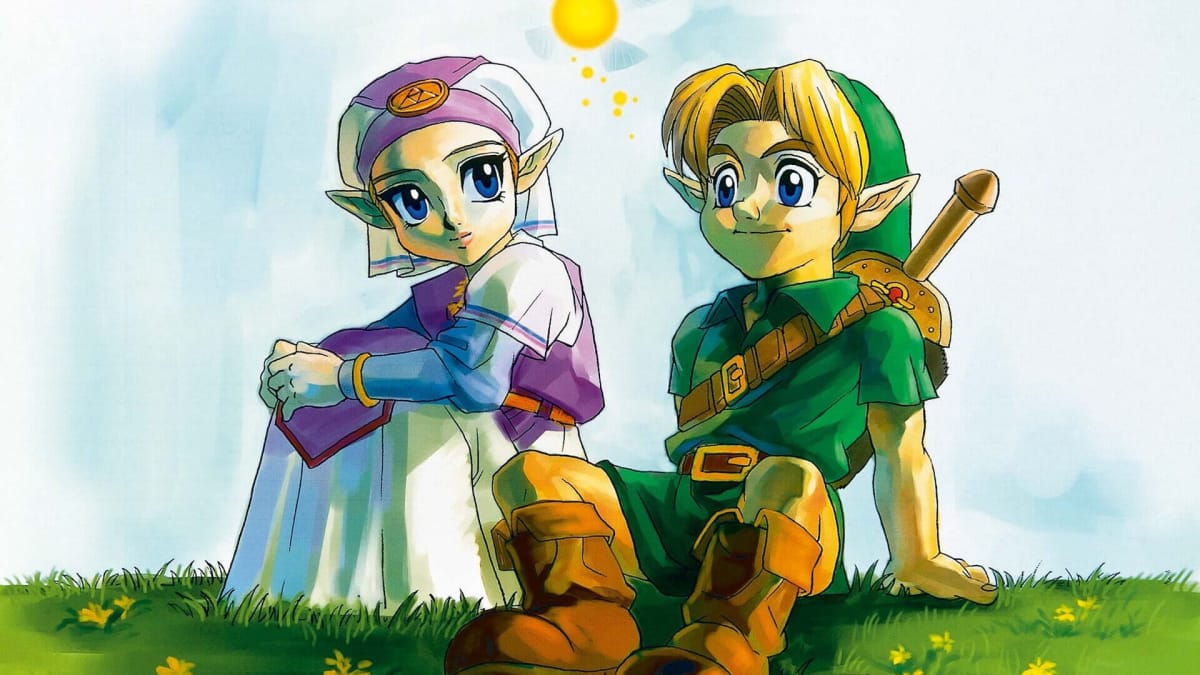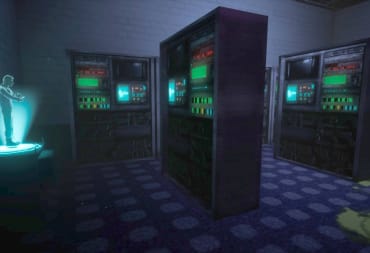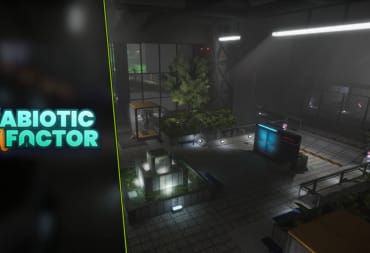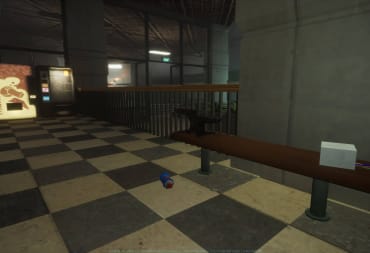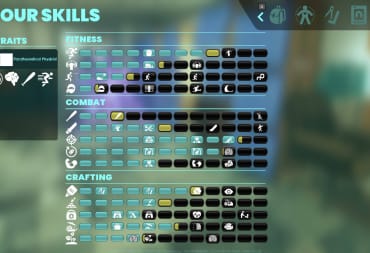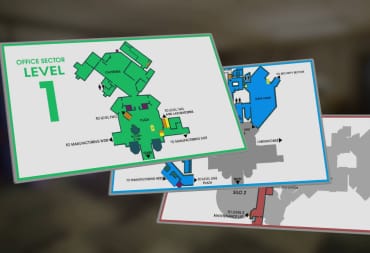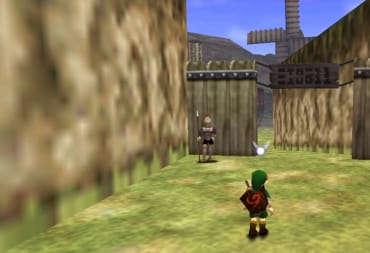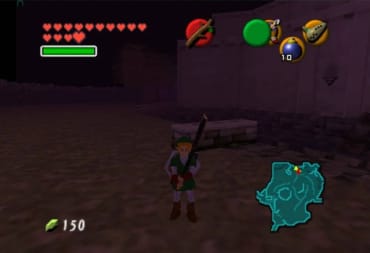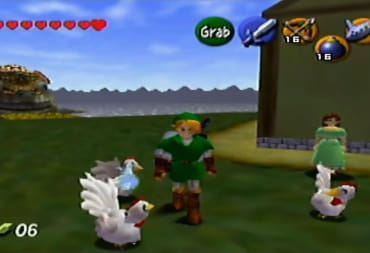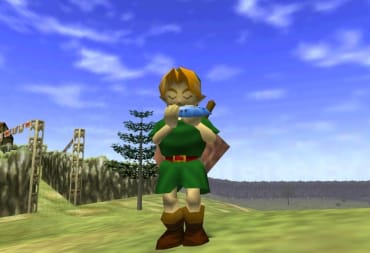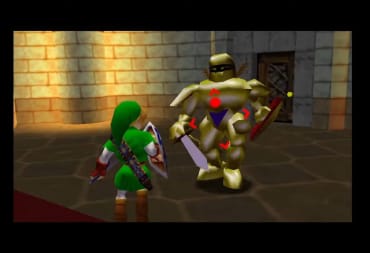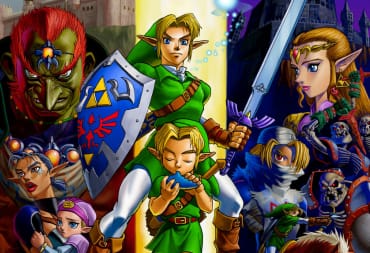Last time, we went into the exhaustive development of Stage 3 of Zelda 64, at this point now officially called Ocarina of Time in development. From it, child Link was introduced, story beats were finalized, and gameplay was refined. With a full year of work on Ocarina of Time, and its release date on the horizon, the finalization of the game's official release is at hand. In this final piece, we will be looking at Stage 4 of development of Ocarina of Time, along with the promises for Ura Zelda and the beginning of development for Zelda Gaiden, which would later become Majora’s Mask.
Did you miss the first part of this series? Start from the beginning here.
Making Changes
Even in this late stage of development, Ocarina of Time was in the process of finalizing itself through multiple tweaks and revisions. Much of this is actually due to Shigeru Miyamoto requesting the developers make changes and alterations to various cutscenes, something that was occurring only a few months before the game officially shipped in November 1998. Almost every scene in the game was tweaked or finalized in these final months, including the now-iconic opening scene of Link riding on Epona in Hyrule Field.
Thankfully, Nintendo was prepared for this. Cutscene director Takumi Kawagoe initially struggled with how to keep the cinematic scenes current each time something was altered without having to remake them from scratch. In the end, he chose to make all of the cutscenes in real time over pre-rendered.
This gave Kawagoe—and more importantly, Miyamoto—relative freedom to alter the scenes as they see fit. All they had to do was change the preset path of the in-game models to fit the blocking of the scene. Camera angles, while often already created, would suffer the biggest changes, as would aspects of Ocarina of Time’s script and dialogue. The data that is not predetermined is generated in real time, meaning that Link’s equipment, for example, will reflect what the player currently has equipped in a scene.

Another aspect that constantly changed would be design tweaks. One part of Ocarina of Time that was always prevalent as the narrative took shape was the importance of music to the overall plot and ambiance. Composer Koji Kondo noted how challenging it was to create some of the rhythms and music, in particular some of the most iconic songs such as “Epona’s Song” and “Zelda’s Lullaby.”
This challenge is reflected in some of the song names in unused text files in the Spaceworld Overdump, with multiple melodies going through revisions in both name and possibly function. Some iconic songs were also added into the game during Stage 4, most notably the “Sun’s Song.” In the Spaceworld Overdump, text was found showing that Link would be able to sleep in various inns, which would then allow the player to manipulate time in a similar vein as the “Sun’s Song.”
This change may seem minor, but in the grand scheme of things, it required the removal of in-game text and locations, as well as the ability to discover the “Sun’s Song.” Changes like this would be constant throughout Stage 4 of development, with Nintendo revising the game until days before it would be officially released in Japan in November 1998.
Stage 4 of Development
Though screenshots at that time closely reflected the final designs of the game, most of Stage 4 would see minor tweaks and removal of items and even moves from Stage 3. The most notable would be the removal of the beam sword attack, first seen in July 1998 right before the start of Stage 4. Other changes would be mostly audio sounds, with tapes at the time showing higher and lower pitched grunts and shouts from Link.
The loss of the beam sword attack is often compounded by another lost area: the infamous Unicorn Fountain. First seen in Stage 3 of development, the fountain is now believed to be a beta version for the fairy fountains found in Ocarina of Time. However, the different design often led to internet rumors that the Unicorn Fountain was a hidden location, waiting to be discovered in Ocarina of Time. These rumors would also state that the beam sword attack would be obtainable at the fountain, and even went as far as saying the fountain was under the ice in Zora’s Domain, in a concave location that looked like a previous entry point for some other area.
The alleged entry point in question in Zora’s Domain is not accessible in the final game, but the Spaceworld Overdump shows a map that is now believed to be the transitional location to enter Zora’s Domain from: a whole map screen with an antechamber, where Link must swim up to the top of the Domain instead of following the Zora river to the entrance. All of this was likely changed between Stage 3 and Stage 4 of development, along with the reworked version of the fairy fountain design.
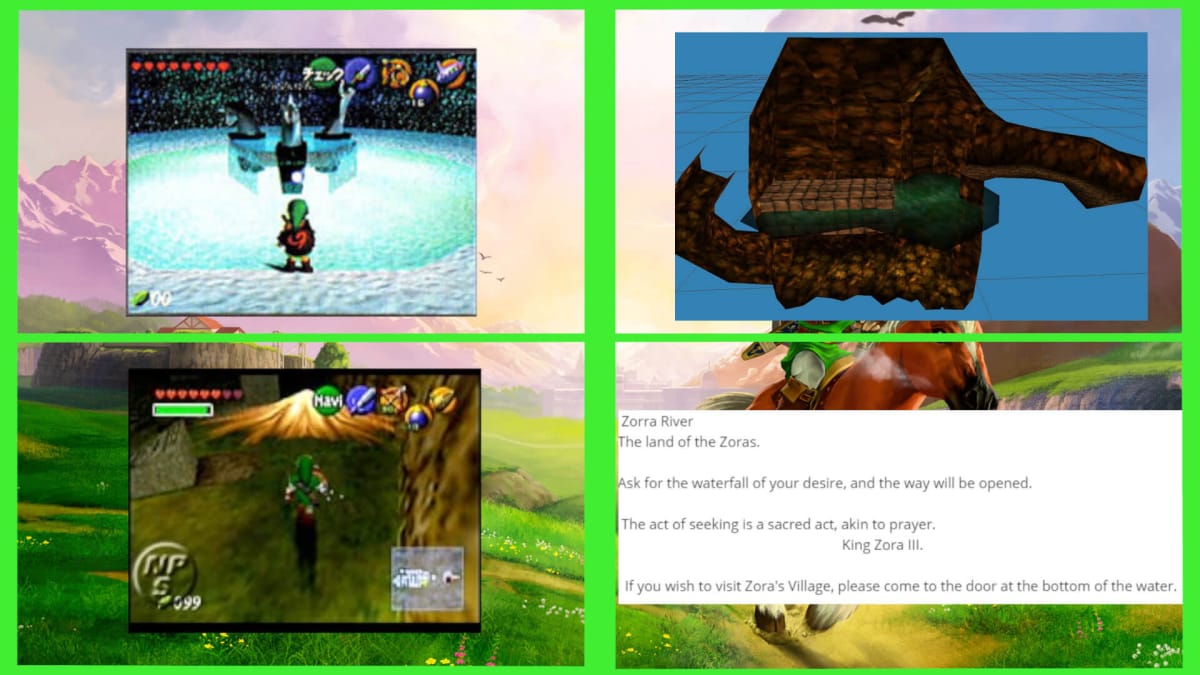
The reason the story of the Unicorn Fountain is fascinating is due to its place as early internet rumors. Much like the Triforce, the Unicorn Fountain was a relic of Nintendo’s game design that players would constantly search for thanks in part to the screenshots of the game’s beta versions revealing its existence. In the end, the lack of the Triforce or the Unicorn Fountain in the final game didn’t stop rumors and myths regarding its location in Ocarina of Time being spread across the internet, but rather helped in enhancing the reputation of Ocarina of Time even further, into a treasure hunt by fans looking for these fabled locations and items.
The Release Candidate Dump of Ocarina of Time is emblematic of most of these minor changes. Some of them are a simple reshuffling of assets, such as placing an enemy in one location over another, or a treasure chest in a new alcove. There would be different actor lists for dungeons, different meshes for environments, and some minor cutscenes that would be scrapped, most notably a small scene which zooms in on every Gold Skulltula killed. A full list of differences from the Release Candidate is currently being compiled, and can be found here for reference.
The refinements to the movement and swordplay were still impressive, though by 2021 standards, did not compare to the smoothness of modern action titles. Ocarina of Time would run consistently at 20 FPS, ten points lower than the base standard of 30 FPS, which was often seen on the Nintendo 64. The smoothness of this was a compromise to the game's overall aesthetics, which would squeeze blood from a stone to provide high-quality visuals that were nearly unmatched at that time for a cartridge-based game.
Due to the 20 FPS, however, it is speculated that several frames of animation, most notably sword movements, were cut from the development of Ocarina of Time. Some of these movements would be relics seen throughout various stages of development, while others would actually make a reappearance in the other Zelda title for the Nintendo 64: Majora’s Mask.
Zelda Gaiden and Ura Zelda
When Ocarina of Time finally released in November 1998, the speculation over the game and its future was still rampant. The early days of the internet were rife with rumors and hearsay about what was found in Ocarina of Time and what Nintendo had planned next for it: two more Zelda games to complement this one, both announced at Spaceworld 1999. The first was Zelda Gaiden, an expansion to Ocarina of Time that would add new overworld and dungeons to explore. The second was Ura Zelda, a remix of Ocarina of Time that would change up the current dungeons as well as add new dungeons and enemies.
The legends and history of Ura Zelda can fill an article onto itself, but the brief version of it is as follows. Ura Zelda was planned to be released for the 64DD, an attempt by Nintendo to fulfil the early promises of having Zelda 64 be the “killer app” for the disk drive. Ura Zelda would then function as a “patch” to Ocarina of Time, adding an additional 64 megabytes into the game's code.
The constant delays of the disk drive forced Nintendo to innovate and revise Ocarina of Time, and by the time the 64DD was released in 1999, the plan for a new Zelda game for the disk drive was already altered again. This time, however, it was due to Zelda Gaiden.
One of the directors of Ocarina of Time, Eiji Aonuma, was originally tasked to bring Ura Zelda to life on the 64DD. It has been well documented that Aonuma was not happy with the project and felt that Ura Zelda is not a true Zelda game at all. He wanted to create a new title instead. Miyamoto challenged Aonuma to develop and release a game within a year (from 1999 to 2000 in development) that could showcase this. This bargain would ultimately be the true reason why Ura Zelda would be cancelled, and instead, Aonuma would help direct the critically acclaimed and cult favorite, The Legend of Zelda: Majora’s Mask.
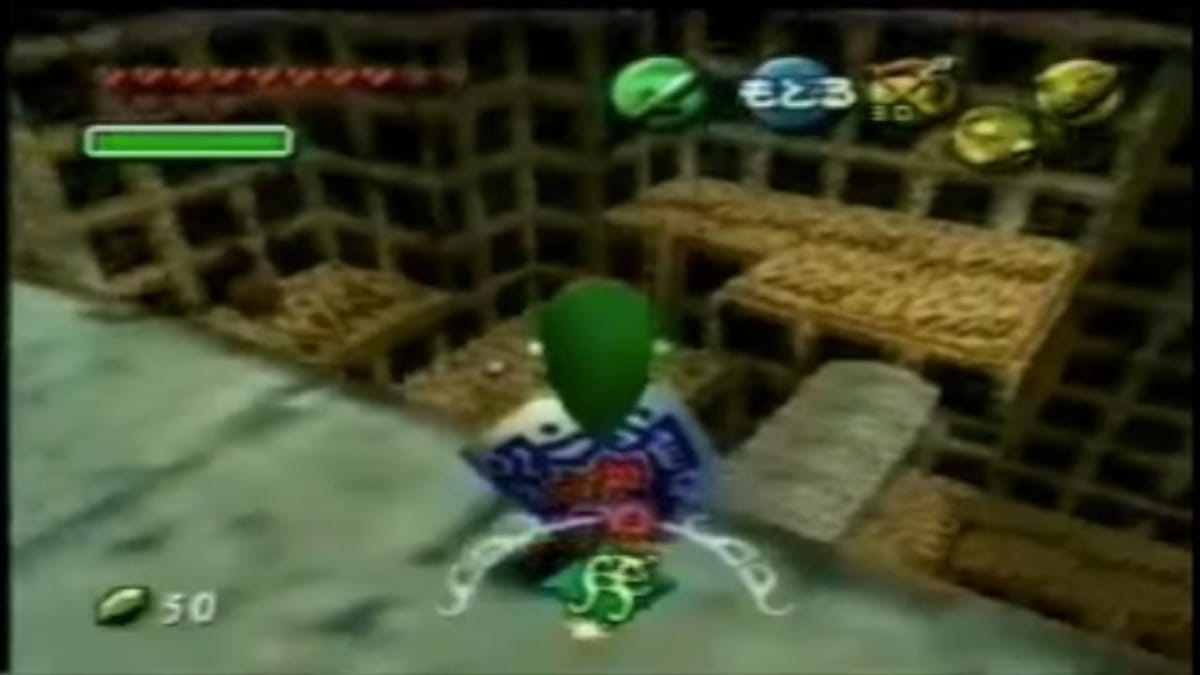
Plans for Majora’s Mask were always ambitious. Some assets from the Gigaleak actually showed the scope of the game being a seven-day timeline instead of three days. We also know from pre-release screenshots that an adult Link mask was originally planned, but scrapped from the final version (or more likely, reworked into the Fierce Deity mask). Majora’s Mask would actually take a concept in Ocarina of Time, the use of masks, and expand upon it greatly, as much of the mask side quest was far from what was originally planned.
Ura Zelda, however, would be promoted as a product all the way into 2002. when the Nintendo GameCube was already on store shelves. Miyamoto famously said in 2000 that Ura Zelda was already completed, and in 2002 there were still lingering questions from the press as to whether Ura Zelda would see the light of day. It eventually did with the Legend of Zelda: Ocarina of Time/Master Quest disk for the GameCube, a move to this day some fans believe is not the complete scope of Ura Zelda at all.
The announcement of Zelda Gaiden alongside Ura Zelda was likely Nintendo hedging bets on the frankly well-deserved popularity of Ocarina of Time. By this point, development for Majora’s Mask was already beginning, and with the strict year deadline given to Aonuma, it was just a question, at least early on, of seeing if he could lead development to completion. It is really unknown when Ura Zelda development officially stopped; we know Aonuma was no longer working on it, but by 2000, the need for Ura Zelda as a patch expansion to Ocarina of Time was no longer necessary. The consolation prize of Master Quest offers the only real look into the remixed dungeons of what Ura Zelda is to this day.
Final Thoughts
Even with the 64DD expansion ultimately being cancelled, the legacy of The Legend of Zelda: Ocarina of Time cannot be understated. The archeological findings of the game's original design, text, and map data is a testament to the importance a game like Ocarina of Time had on so many people. It was the perfect storm for Nintendo; the burgeoning internet in the mid- to late-1990s, coupled with their impressive push into 3D and the constant rumor mill revving up to the game’s final release, offered outsiders an unprecedented look into the stages of a game’s development.
The Legend of Zelda: Ocarina of Time is an important game for many reasons. It is a time capsule of the wild west of game design, a subtle story about growing up wrapped in good and evil, a musical masterpiece that to this day inspires gamers globally, and is rightfully considered one of the greatest games ever made. At its heart, however, Ocarina of Time is a story about the passion and dedication of a team of developers pouring their souls into a game that, unbeknownst to them, would stand for all time.
I want to thank the following individuals behind the sources of information used throughout this entire series:
Have a tip, or want to point out something we missed? Leave a Comment or e-mail us at tips@techraptor.net
